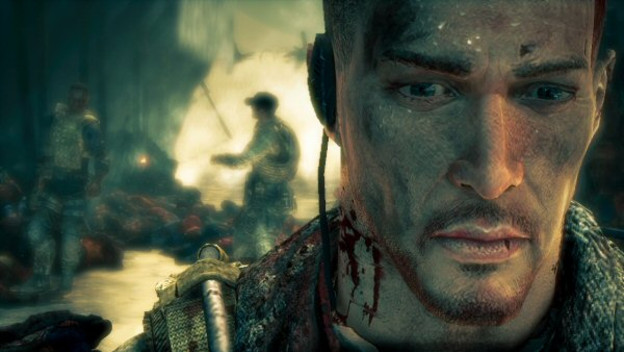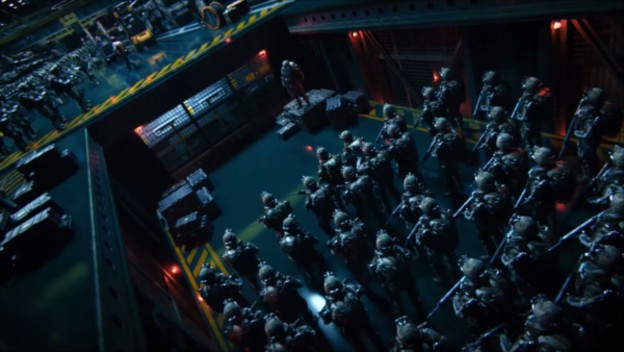[ Note, 10/11/2014, 22:20 GMT: This article’s title is not its original. ]
Gears of War creator, Cliff Bleszinski, recently took to Twitter the other day to vent about video games aspiring to be movies and how they shouldn’t. After watching a recent Call of Duty: Advanced Warfare trailer , which boasted that the game would essentially blur the line between a game and a movie, Bleszinski let his two-cents be heard: “ Stop with this shit, ” he said via his official Twitter account . “ Games shouldn’t aspire to be movies. ”
Cinematic experiences, such as actually watching a movie or a show / game that presents itself as such, can be pretty darn good experiences–especially if they have a good story. But where should one draw the line? Are “cinematic experiences” actually a bad thing in video games?
Well, it depends on a number of things, such as story, execution, tone, and so on. However, it’s generally considered that games which force a cinematic experience onto you are a bad thing, because it usually tends to mean–from a technical standpoint–that the game will be compromised in some way, such as a locked frame rate of 30 or below, or the game itself being letterboxed (the two horizontal bars typically associated with movies).
In a demanding market for at least 60 frames per second amongst PC and console players alike (especially with the current-gen consoles now in full circulation for nearly a year), having anything less than 60fps, 1080p at 16:9 is considered a disappointment among some, and I can see where they’re coming from–playing games at or above 60 frames per second is pretty nice.
Letterboxing is also considered an annoyance as well, as it constrains a given game’s aspect ratio to something that isn’t quit 16:9. I’ve heard that letterboxing also reduces the amount that needs to be rendered at a given time as well, which makes sense, because two black bars will be blocking out certain portions of a renderable scene that’s on screen–which could be particularly beneficial to consoles.
In some games, it’s not the letterboxing or the locked frame rate at all, it’s just the tone and presentation, i.e. lots of cutscenes produce similarly to that of scenes in movies: suspense, anticipation, staging, tension, tight close-ups and so on and so forth. Some people may say that something akin to a blockbuster movie, regardless of presentation, doesn’t have a place in gaming, but there are also those who really appreciate it–even if it is either at 60 or 30 frames per second, or in an odd aspect ratio. Let’s not forget that it’s okay to like what others may not like.
While opting for a cinematic experience can be construed as a developer taking shortcuts to make sure their game looks good on all platforms, let’s not forget the game they’re developing is their game, and they have their own right to create their game in their artistic vision if they so desire. Should we criticism them for it? Well, I don’t feel we should, but I understand why we would.
Nailing a cinematic experience can be pretty damn cool. Yes, it’s a game, but it feels like watching a movie, and movies are pretty dope. The best of both worlds, right? Not necessarily. If the cinematic experience isn’t executed well, and it interferes with the gameplay experience (arguably the most important experience), then a game can flop. Hard.

When executed correctly, however, a cinematic experience can really help deliver–and even greatly enhance–a game’s story and characters, as it can bring out the essence of a scene, such as suspense, emotion, enlightenment or comedy.
But, sure, some people just want a game that’s bombastic, charming, interesting, and–above all–fun, and that’s okay. It’s also okay that some people want to have a cinematic experience, so they can get involved and / or immersed in the game’s story.
Whether it locks the frame rate and letterboxes the game, presents it as something you’d pay to see in a cinema (except you can interact with the movie), or enhances a game’s presentation, cinematic experiences have their place in games if they’re executed well. I don’t necessarily see that they’re a bad thing, but I can understand why some people may consider it as such. If they’re done well, then good. If not, then some people aren’t going to be happy.
What you think about cinematic experiences in video games? Let us know in the comments below!
